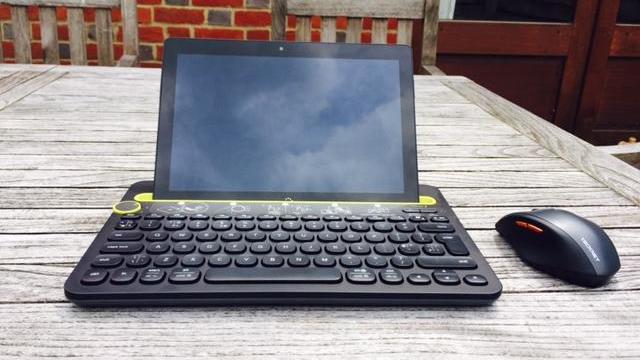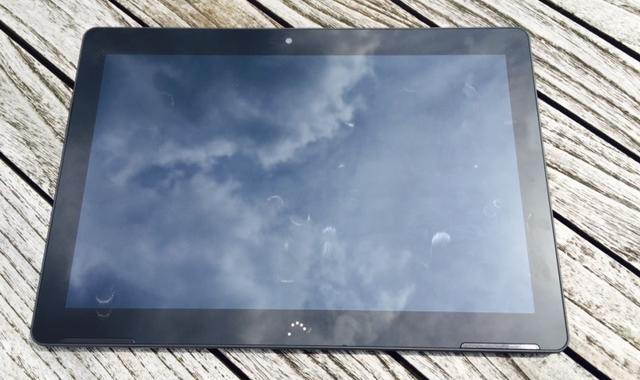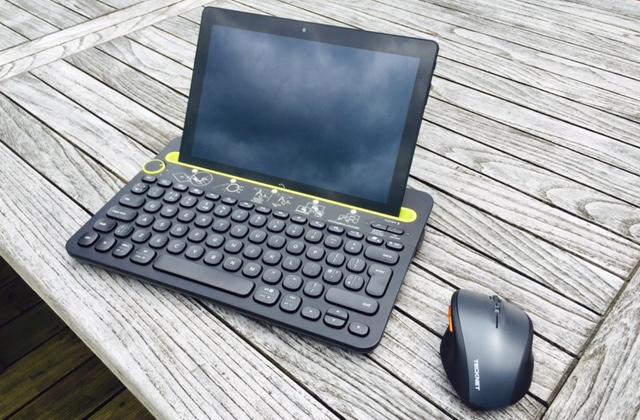BQ's Aquaris M10 Ubuntu Edition is an underwhelming tablet [Review]

As employees have become more and more flexible in recent years thanks to the power and performance of mobile devices, the way we work has changed dramatically.
We frequently chop and change between smartphones, tablets and laptops for different tasks, which has led to the growth of the hybrid market -- devices such as Microsoft’s Surface Pro 3 and Apple’s iPad Pro -- that provide the power and functionality of a laptop with the mobility and convenience of a tablet.
The latest company to try and tempt users onto one device that covers all eventualities is BQ, a Spanish firm that earlier this year released the first ever Ubuntu-powered tablet in the form of the Aquaris M10.
The open-source Linux-based Ubuntu operating system, created by British company Canonical, may not be well known to the majority of people, but it has long been a favorite amongst developers and is unique in that it is a single software platform running across smartphones, tablets and PCs alike.
The Aquaris M10 is certainly an interesting proposition for Ubuntu fans, having the ability to switch between a tablet and a fully-fledged PC, so we took a closer look to see what it has to offer.
Design and Display
Let’s start with some of the key design stats. The M10 measures 246 x 171 x 8.2 mm and weighs 470g, which isn’t exactly lightweight but still light enough to hold in one hand relatively comfortably for short periods of time. The back is made out of a matte black plasticky material which, despite feeling somewhat tacky, means the tablet is not likely to slip out of your hands and doesn’t get covered in pesky fingerprints.
On the front, BQ has placed speakers near the bottom corners, which look quite smart and give the device a satisfyingly symmetrical look when held in the default horizontal position. The bezels around the display do look quite big, which could be a pain point for some people depending on personal preference, but all in all the M10 has a clean, and familiar appearance.

One factor that will make a lot of people very happy is the amount of ports included. With a micro USB, micro HDMI, a 3.5mm headphone jack, and an SD card slot there’s enough to keep everyone happy without a sacrifice on design.
The display is a 10.1-inch capacitive touchscreen with two different resolutions available depending on whether you opt for the HD or Full HD version. The HD display has a 1280 x 800 resolution with a pixel density of 149 ppi, whilst the Full HD tablet comes in at 1920 x 1200 and 224 ppi. Both are multi-touch, with a capacity for up to 10 fingers at any one time and have three different modes of tap response: tap, double tap and long press.
Our review sample came with the Full HD version which does a solid job without being spectacular. There’s a large range of brightness available to suit any situation and colors appear clear without having the extra crispness you get with a high-end device.
Mobile workers using the Aquaris M10 for emails or documents whilst on the move will be happy enough, although watching videos or looking at high resolution pictures won’t be quite so satisfying.
Cameras
The 8-megapixel rear camera and 5-megapixel front snapper, despite not setting the world alight, actually take some fairly decent photos. The lack of flash means they both tended to suffer in low light and the contrast isn’t fantastic, but both cameras have autofocus and for a budget device they should satisfy your camera needs -- especially if this is primarily a work device.

When held in landscape mode, an arrow appears at the bottom for me to swipe up. From reading other reviews I understand that reveals some extra camera options, but for the life of me I couldn’t get it to work on my device. I don’t know whether it was me or the tablet, but that arrow just sat there taunting me, so I only had access to the most basic camera functionality.
Video is shot at 1080p and wasn’t as smooth as I was expecting. Videos tended to judder along and had the tendency to crash the Camera Roll app when I tried to play them, so if you shoot a lot of videos either for work or pleasure this probably isn’t the device for you.
Software
Seeing as this was my first proper experience using the Ubuntu operating system, I was excited to see what it would have to offer and looking forward to trying something new.
Unfortunately for Canonical, Android and iOS are now so advanced and familiar that it’s always going to be hard to make a dent, especially in the first iteration of a tablet. And that right there is one of the main problems. There’s nothing majorly wrong with the software at all, but it’s hard not to compare it with the others on offer and the general user experience just doesn’t quite match up.
The M10 does, however, have some nice features. The main menu is split into seven different sections: Today, Nearby, Apps, News, Music, Video and Photos. I would argue that they aren’t all necessary due to quite a lot of crossover, but there are some nice touches such as local landmarks and concerts from Yelp and Songkick respectively which give some added context.
The Apps section comes pre-loaded with a wide variety of offerings, including the likes of Amazon eBay, Telegram and HERE Maps, which has most of the early bases covered. The app store is limited in that it looks a bit bare -- you’d have to know what you were looking for rather than having a plethora of options shown to you as in the Google Play Store and Apple App Store.
The News section comes with Spanish site El Pais installed -- which obviously isn’t any use unless you can speak Spanish -- but music fans will love the Music section which shows popular tracks on SoundCloud, nearby concerts and popular YouTube tracks.
In Use
Under the hood, the M10 sports a MediaTek MT8163 processor, with a 64-bit Cortex-A53 CPU, clock speeds of up to 1.3GHz and 2GB of RAM. All in all, it offers substandard performance for this day and age. Frequent stuttering, especially when more than one app is opened at once and latency during videos and games, shows the processor’s general lack of power.
One of the most important features of any modern tablet is flexibility, a necessity for mobile workers who need to be able to seamlessly switch between tablet and PC whilst on the move.
The M10 doesn’t come with a keyboard, but for our review we received a Logitech k480 Bluetooth multi-device keyboard which I am using to write this portion of the review. This particular tablet-keyboard combination certainly isn’t the most stylish, but connecting the devices was simple and responsiveness in the Notes app has so far been sound.

We also received a Tecknet mouse to complete our mobile PC. Whilst connecting the devices was, again, very straightforward, responsiveness hasn’t been quite so smooth with the pointer prone to stuttering it’s way across the screen. There are also a couple of slight user experience issues, such as the hidden toolbar on the left hand side of the screen which doesn’t always want to pop out when you hover over it.
Having said that, the M10 is a decent size for using on your lap and is light enough to comfortably use for extended periods of time. You can do everything you would expect -- browse the web, check emails etc -- and a nice feature is that the touchscreen can still be used when the keyboard and mouse are connected, again giving that extra level of flexibility for users.
Charging the device wasn’t entirely straightforward as the M10 only comes with a European power socket. The battery isn’t especially slow to drain, but when plugged into a computer it doesn’t exactly charge quickly, so you’ll want to invest in a UK adaptor.
Verdict
The Aquaris M10 is very much a first attempt for BQ and you would expect future iterations to have some significant improvements. It’s also hard to find compelling reasons why iOS or Android fans would want to switch over to an Ubuntu tablet, but those familiar with the operating system should be excited to finally have their needs met in the tablet market.
One positive factor is that switching between tablet and desktop mode works very well for the most part, so can definitely fulfill professional needs as much as casual ones. This could be a viable option for someone who wants that flexibility and isn’t too fussed about some of the more superficial features.
Aspects such as the cameras, display and build quality could all be improved, but are about right for the price point in this unspectacular but solid device.
With the HD version costing €229.90 (£187) and the full HD tablet coming in at €279.90 (£227), the M10 offers decent value for money and provides a solid platform for BQ to build on in the future.
Pros
- Decent tablet-PC convergence
- Lightweight for use on the move
Cons
- Processor lacking power
- No camera flash
- Disjointed user experience
- Juddering video recording
ITProPortal Review: 6/10
Published under license from ITProPortal.com, a Net Communities Ltd Publication. All rights reserved.
